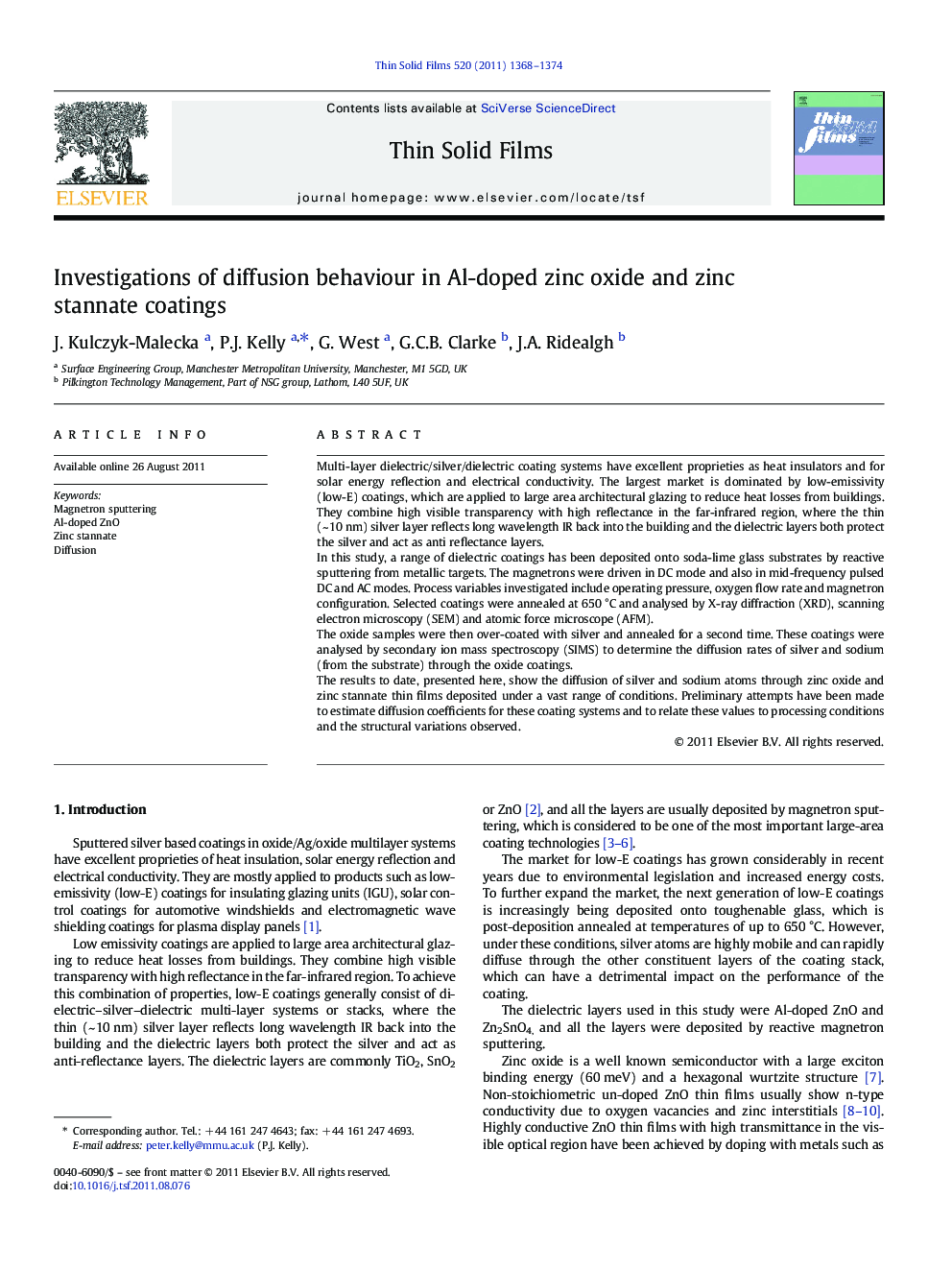| Article ID | Journal | Published Year | Pages | File Type |
|---|---|---|---|---|
| 1668191 | Thin Solid Films | 2011 | 7 Pages |
Multi-layer dielectric/silver/dielectric coating systems have excellent proprieties as heat insulators and for solar energy reflection and electrical conductivity. The largest market is dominated by low-emissivity (low-E) coatings, which are applied to large area architectural glazing to reduce heat losses from buildings. They combine high visible transparency with high reflectance in the far-infrared region, where the thin (~ 10 nm) silver layer reflects long wavelength IR back into the building and the dielectric layers both protect the silver and act as anti reflectance layers.In this study, a range of dielectric coatings has been deposited onto soda-lime glass substrates by reactive sputtering from metallic targets. The magnetrons were driven in DC mode and also in mid-frequency pulsed DC and AC modes. Process variables investigated include operating pressure, oxygen flow rate and magnetron configuration. Selected coatings were annealed at 650 °C and analysed by X-ray diffraction (XRD), scanning electron microscopy (SEM) and atomic force microscope (AFM).The oxide samples were then over-coated with silver and annealed for a second time. These coatings were analysed by secondary ion mass spectroscopy (SIMS) to determine the diffusion rates of silver and sodium (from the substrate) through the oxide coatings.The results to date, presented here, show the diffusion of silver and sodium atoms through zinc oxide and zinc stannate thin films deposited under a vast range of conditions. Preliminary attempts have been made to estimate diffusion coefficients for these coating systems and to relate these values to processing conditions and the structural variations observed.
